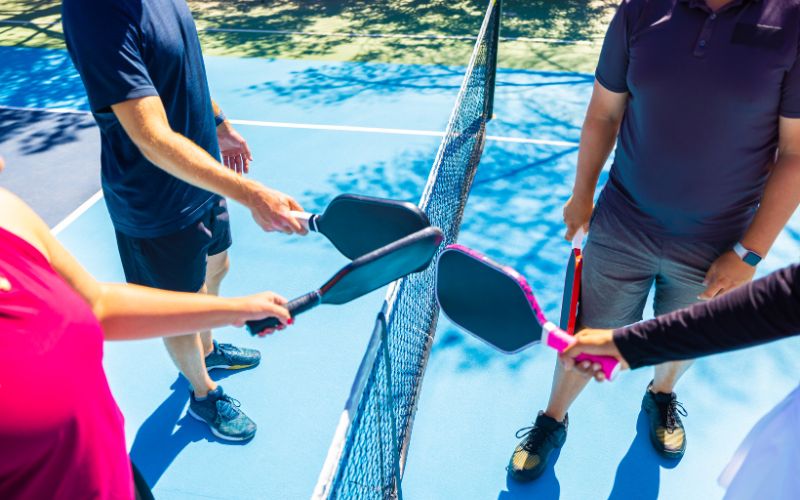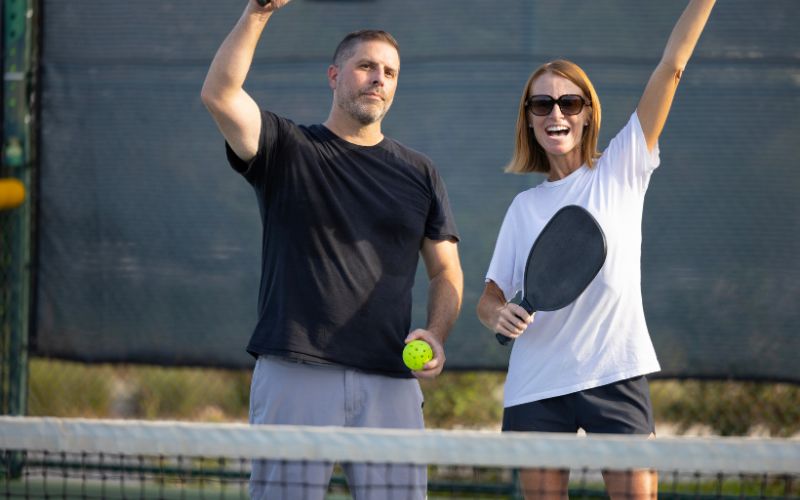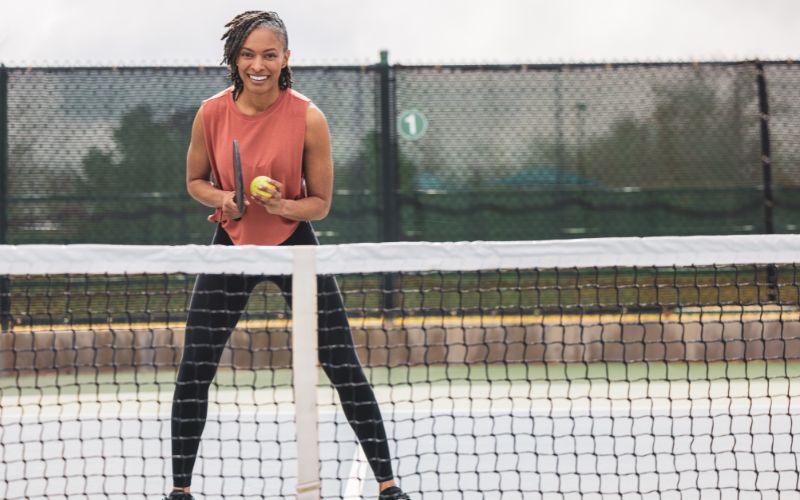Pickleball, a rapidly growing paddle sport, offers numerous benefits for players of all ages and skill levels. Practicing pickleball alone can be an effective way to improve your skills, enhance your game, and stay active even when you don’t have a partner available. In this comprehensive guide, we explore various solo pickleball drills and techniques to help you elevate your game while practicing alone.
Understanding the Importance of Solo Pickleball Practice
Solo pickleball practice allows players to focus on specific aspects of their game, refine techniques, and develop muscle memory. Whether you’re a beginner looking to build a strong foundation or an advanced player aiming to master advanced shots, consistent practice pickleball alone can significantly enhance your skills and performance on the court.
Benefits of Practicing Pickleball Alone
- Consistent Practice: Solo practice enables players to maintain a regular practice routine, leading to gradual improvement and skill development over time.
- Focused Improvement: Practicing alone allows players to target specific areas of weakness, such as pickleball drills or shot accuracy, without distractions.
- Convenience: Practicing alone offers flexibility in scheduling and eliminates the need to coordinate with a partner, making it easier to incorporate pickleball practice into your routine.
Solo Pickleball Drills for Skill Development
Solo Drill 1: Static Drop Feed
A Static Drop Feed involves dropping the ball in front of you, allowing it to bounce once, and striking it at the center of your paddle. This drill aids in improving serves, rallies, and groundstrokes, fostering player confidence in clearing the net and sustaining a rally.
The rally is a continuous exchange of play from the serve until a point concludes. A groundstroke occurs when a player hits the ball after it bounces once. The Static Drop Feed enhances hand strength and fosters proper form, offering a platform for practicing various underhand serves.
Static Drop Feed serves as a fundamental solo drill, laying the groundwork for pickleball technique enhancement. While it can be practiced anywhere, the court remains the optimal setting for this drill.
How to Perform Static Drop Feed To execute the Static Drop Feed:
- Drop the ball in front of your feet.
- Allow the ball to bounce once.
- As it ascends, strike the ball at the center of your paddle.
- Focus on technique rather than clearing the net.
- Retrieve another ball or move to the opposite court side to repeat the drill.
Pro Tips
- Swing low to high to generate a strong groundstroke.
- Maintain relaxed strokes to ensure proper power behind shots.
- Aim to hit the ball diagonally, across the court, or centrally to bolster confidence in directional accuracy.
Solo Drill 2: Topspin Drive
The Topspin Drive solo drill concentrates on enhancing serve strength, particularly for aggressive shots in pickleball.
Executing a Topspin Drive involves maneuvering the pickleball to dip swiftly after clearing the net. This technique forces opponents to return the ball lower, challenging the continuity of the rally. Additionally, it aids in serving deep, pushing opponents behind the baseline.
It’s important to note that while the drill emphasizes achieving a low trajectory, it doesn’t entail landing the ball directly in the kitchen—a legal serve must still clear the net and land within the correct service area.
To execute a Topspin Drive, begin with a Static Drop Feed, ensuring the serve remains low but clears the net adequately. A loose wrist during the serve allows the ball to remain low, providing greater momentum than solely relying on the arm and elbow.
How to Perform Topspin Drive The Topspin Drive can be performed as follows:
- Drop the ball in front of your feet.
- Let the ball bounce once.
- As it ascends, strike the ball at the center of your paddle with a loose wrist.
- Ensure the ball clears the net but maintains a low trajectory post-impact.
- Retrieve another ball or move to the opposite court side to repeat the drill.
Pro Tips
- Maintain the paddle at a 90-degree angle to strengthen groundstrokes.
- Step into the serve to impart more momentum and power.
- Experiment with footwork to determine the most effective serving approach.
Solo Drill 3: Rolling Shot
The Rolling Shot solo drill focuses on executing groundstrokes just before the non-volley zone, commonly referred to as “the kitchen.”
This drill enhances control near the net and aids in practicing drives, which involve straight, low shots penetrating the opposing backcourt. Practicing the Rolling Shot prepares players for scenarios where they maneuver close to the kitchen line during intense rallies.
Executing a Rolling Shot necessitates dropping the ball before the non-volley zone, letting it bounce once, and striking it at the center of the paddle with a loose wrist.
How to Perform Rolling Shot To perform the Rolling Shot:
- Drop the ball in front of your feet and before the non-volley zone.
- Let the ball bounce once.
- As it ascends, strike the ball at the center of your paddle with a loose wrist, focusing on executing a drive.
Pro Tips
- Alternate between court sides to gain confidence in serving from both ends.
- Serve aggressively to test opponent responses and improve drive precision.
- Experiment with footwork to optimize momentum and control.
Solo Drill 4: Serve and Split Step
The Serve and Split Step drill emphasizes serving techniques and post-serve positioning. Unlike drop serving, this drill focuses on enhancing volley serves and integrating split-step movements post-serve.
A split-step allows players to react swiftly and move efficiently towards the kitchen line, enhancing gameplay pace and agility.
How to Perform Serve and Split Step To execute the Serve and Split Step:
- Stand behind the baseline or a simulated one.
- Hold the ball in your non-dominant hand and perform an underhand serve.
- Make contact at the center of your paddle.
- Execute a split-step immediately after contact, landing on the balls of your feet.
- Perform a shadow swing and another split-step as you advance toward the kitchen line.
- Repeat the sequence.
Pro Tips
- Serve to the corners to simulate game scenarios realistically.
- Experiment with hand placements and serving techniques to optimize serves.
- Focus on split-step execution to enhance reaction time and court coverage.
Solo Drill 5: Shadow Swing
The Shadow Swing drill involves swinging the pickleball paddle without making contact with anything—a practice aimed at improving technique and comfort with paddle handling.
How to Perform Shadow Swing To perform the Shadow Swing:
- Firmly grip the paddle with a loose wrist.
- Execute low-to-high swings.
- Repeat the motion as needed.
Pro Tips
- Experiment with different paddle makes and models to adapt to varying equipment.
- Practice the motion without equipment, focusing on form and technique imagery.
- Embrace the versatility of the Shadow Swing, utilizing it as a convenient tool for off-court practice sessions.
Practical Tips for Effective Solo Pickleball Practice
1. Set Specific Goals
Before starting your solo practice session, set specific pickleball practice goals based on areas you want to improve, such as shot consistency, footwork, or strategy. Setting clear objectives helps you stay focused and track your progress over time.
2. Use Visual Aids and Equipment
Utilize visual aids such as cones, targets, or tape to create markers on the pickleball court for target practice and accuracy. Additionally, invest in quality pickleball paddles and balls to replicate game-like conditions during practice sessions.
3. Incorporate Variety Into Your Drills
To keep solo drills engaging and effective, incorporate a variety of exercises targeting different aspects of your game. Mix up your drills by alternating between hitting against the wall, practicing serves, and simulating game scenarios to challenge yourself and prevent boredom.
4. Record and Analyze Your Practice Sessions
Consider recording your solo practice sessions using a video camera or smartphone to analyze your technique, form, and shot selection. Reviewing videos of your practice sessions allows you to identify areas for improvement and make necessary adjustments to your game.
5. Stay Motivated and Have Fun
Maintain a positive mindset and stay motivated during your solo practice sessions by focusing on the enjoyment and satisfaction of improving your skills. Experiment with different drills and techniques, and don’t be afraid to challenge yourself to reach new levels of proficiency.
Conclusion
Practicing pickleball alone is a valuable and effective way to enhance your skills, refine your technique, and elevate your game to the next level. By incorporating solo drills and following practical tips for effective practice, players can develop confidence, consistency, and proficiency on the court. Whether you’re a beginner or an experienced player, regular solo pickleball practice is key to achieving success and enjoying the game to its fullest potential.







